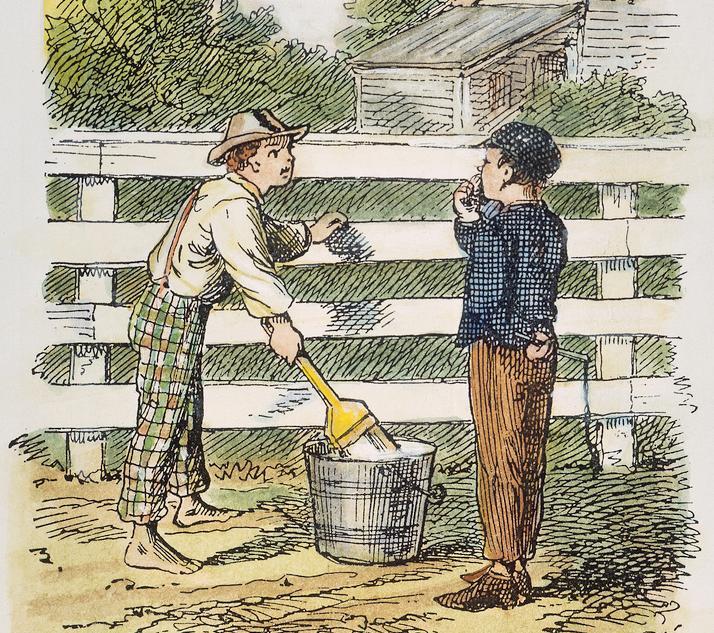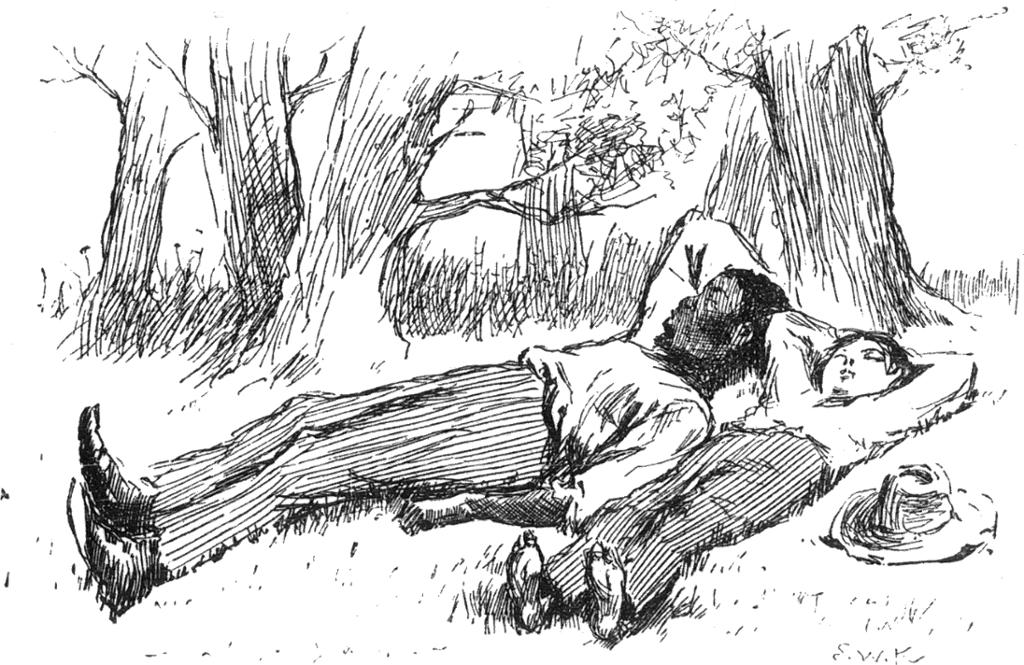Mark Twain


Samuel Langhorne Clemens grew up in a town called Hannibal, located on the western bank of the Mississippi in the state of Missouri. He loved the river and watched the big paddle steamers and other river boats go by, and he dreamed of one day becoming a river pilot.
Clemens chose to write under the pen name Mark Twain as an expression of his love for the river and the river boats. River navigation was intricate, as the waters would change due to shifting sandbanks. River boats would have a leadsman or a pilot with a long stick up at the prow calling out: "M-a-r-k three! Half twain! Quarter twain! M-a-r-k twain!" - meaning a two-fathom depth and safe water.
Twain's boyhood dream of becoming a pilot on the river was fulfilled, but after a couple of years of piloting, the American Civil War put a stop to his work on the river.
Like so many famous authors, Mark Twain started his writing career as a journalist, and he wrote humorous sketches for various papers in big cities both on the East Coast and on the West Coast. Twain gradually developed his writing talent, and he was determined to become an author. His two most famous works are monumental in American literature and have become world classics. The Adventures of Tom Sawyer appeared in 1867 and The Adventures of Huckleberry Finn in 1876. They both commemorate Mark Twain’s happy childhood on the banks of the great Mississippi river.
The Adventures of Tom Sawyer and Adventures of Huckleberry Finn have been enjoyed by grown-ups and children for generations, but it is an interesting fact that according to Mark Twain himself, he “wrote them for adults exclusively”. The books were actually banned from the children’s room at certain libraries, whereas other libraries banned them altogether. From a contemporary perspective it seems quite preposterous, but it teaches us a thing or two about the morality and values at the time.
Tom and his friends are portrayed with the diverse personalities typical of all human beings, – they are good and bad, kind-hearted and mischievous at the same time. They are not bad rascals, but they steal, and they cheat, they play boys’ tricks and have a good time. Twain depicts the characters speaking in vernacular language, which many regarded as demeaning and potentially damaging for readers. Tom and Huck were not seen as good role models for small children who were supposed to learn Christian morality.
In more recent years, the books have been criticised for the use of racial slurs and for their portrayal of Black characters, and there have been calls to ban the books from schools.
The Adventures of Tom Sawyer is based on Mark Twain’s own happy boyhood. The novel is written from a third-person point of view. In an episode-like narrative, we follow Tom and his friends on their escapades in their neighbourhood in a small town in Missouri. It is told in Twain’s typically humorous style, but the story takes a more disturbing turn when the boys witness a murder when they visit a churchyard one night. An innocent man is arrested, and the boys must testify in court.
The story is dramatic, funny, and brilliantly composed. In addition, it is realistic. We get a clear picture of what it was like to grow up in Missouri around 1830. The initial ban was later lifted, and generations of both adults and children have enjoyed the stories of Tom and Huck.

The Adventures of Huckleberry Finn was originally planned as a sequel to The Adventures of Tom Sawyer (Tom actually appears in the story), but the plan was altered along the way. So The Adventures of Huckleberry Finn stands alone. The novel is Mark Twain’s masterpiece, and is counted as one of the foremost American novels. Huckleberry Finn’s voyage down the river on a raft with the runaway slave called Jim gives rise to universal themes related to human relations and moral reflections.
Besides the two characters on the raft, there is a third protagonist – the mighty and mystic Mississippi, the companion that may be carrying them towards freedom. As in Tom Sawyer, Twain uses his own childhood as inspiration for the novel.
Huck Finn deals in the grey zone between right and wrong. But Huck knows the difference, and he is by no means a scoundrel; he is constantly struggling with his conscience in connection with what he is doing. For one thing, he is helping a slave escape, which at the time was considered a serious crime. Secondly, the two runaways (Huck is running away from his abusive father) must steal whatever they need of supplies to get by on their voyage down the river.
Huck’s moral doubts about his petty criminal activity are what make him come alive. The reader believes in this boy struggling to survive and to save his friend in a sinister world, brilliantly symbolised by the dark riverbanks drifting by and the dubious characters they encounter along the river.

“Tell it like it is” was a slogan for artists during the period we refer to as Realism. In American literary tradition, Mark Twain belongs to the so-called Regional Realists, writers who experienced and wrote about life in regional America in the 1800s.
America changed a great deal during Mark Twain's lifetime. The Industrial Revolution transformed the country. The American Civil War (1861–1865) threatened to tear the country apart. Slavery ended. There were immense waves of immigration. Twain depicts life in America during these turbulent times in a generous and realistic way.
Take the quiz to check what you remember from the text.
Related content
Excerpt from Mark Twain's novel Huckleberry Finn.
Tasks related to the excerpt from Huckleberry Finn by Mark Twain.